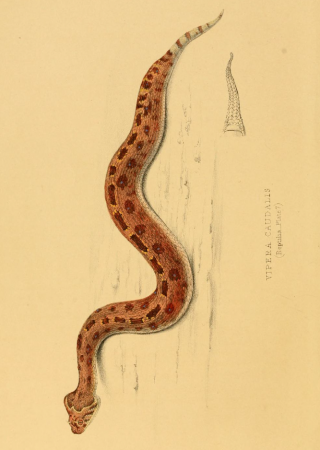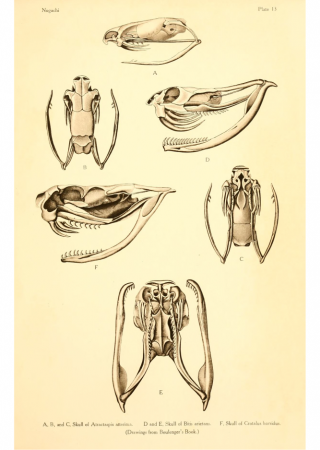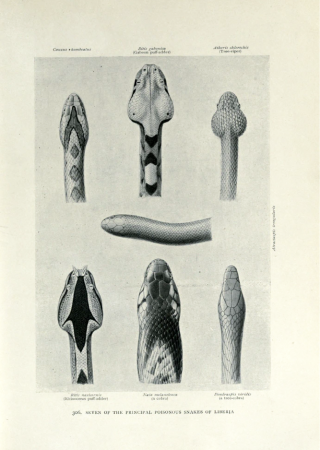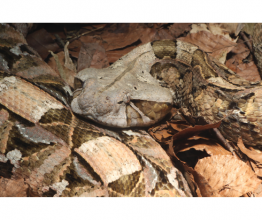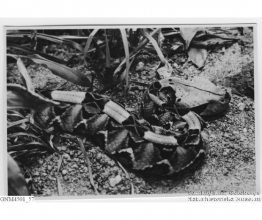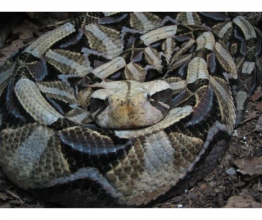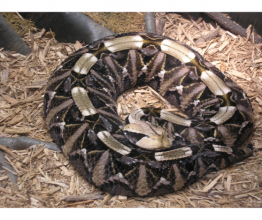Gaboon viper
- ...the poison fangs of a Gaboon viper are up to 5 cm long, the longest teeth of any snake?
- ...the Gaboon viper is the master of fasting; in captivity it can go up to a year without eating?
- ...when hunting, the Gaboon can wait for several days without moving, but when prey approaches, it can hurl itself at the prey at speeds of up to one meter per second?
- ...when disturbed, the Gaboon viper attempts to frighten the intruder away by swelling its body and making a warning hissing sound?
- ...a Gaboon viper is capable of killing and eating a small antelope?
- ...the bright coloring of the Gaboon viper actually helps camouflage it on the forest floor, since it is almost invisible among fallen leaves?
- ...the Gaboon viper, because of its laziness and non-aggressive nature, is a favorite plaything for Gaboon children?
Basic information:
Phylum – chordates (Chordata)
Class – reptiles (Reptilia)
Maximum length – 2 m
Food – small mammals and birds
Distribution – equatorial Africa
Type of poison – hemotoxin, neurotoxin
Distinguishing marks:
Stocky body covered with gray, pink, brown, tan and black triangles. Large triangular head, some subspecies can have short horns on their snout. Tail narrows fairly rapidly.
The Gaboon viper is a massively muscular snake, living in the rainforests of central Africa. It can weigh over eight kilograms; the largest known individuals have reached ten. It is quite torpid, not moving much when there is no need. Because of this, deaths from Gaboon bites are quite rare, but the amount of poison it carries makes it one of the most dangerous snakes in the world. Most bites occur when someone steps on one. The bitten area is painful and swells, with subdermal hematomas often occurring nearby. Further symptoms include reduced blood pressure, nausea, unconsciousness, disrupted vision and bleeding of the intestines, lungs and kidneys.

